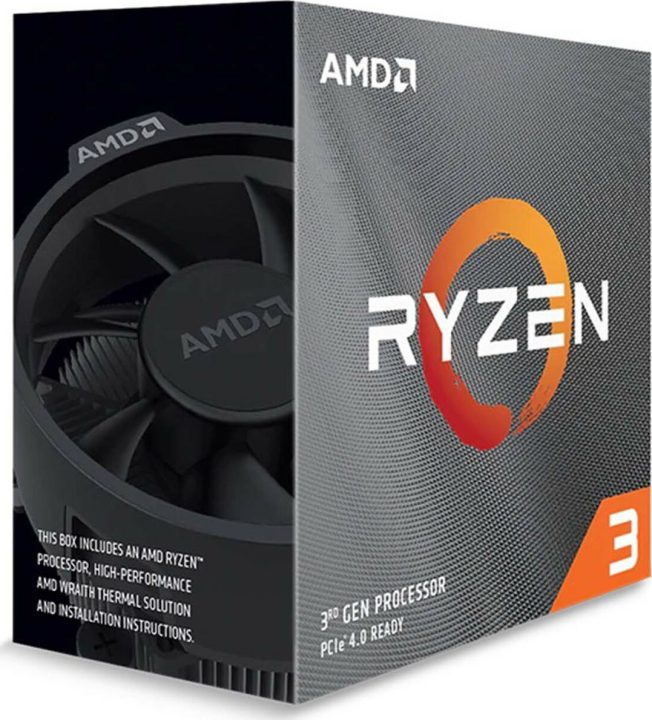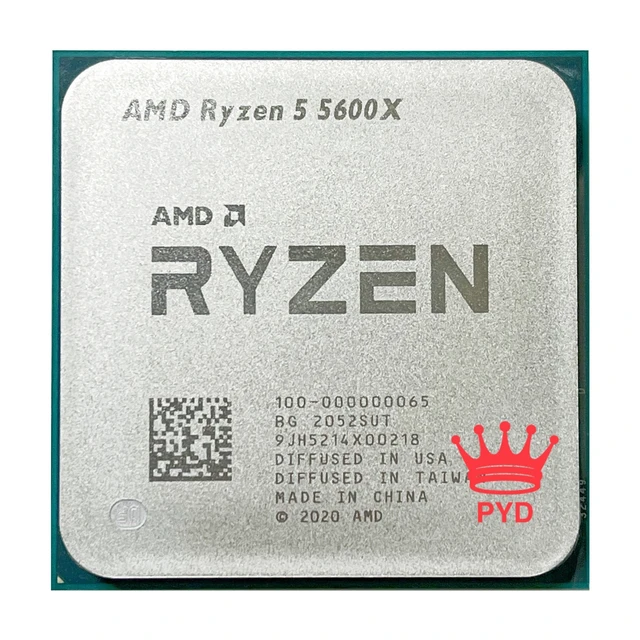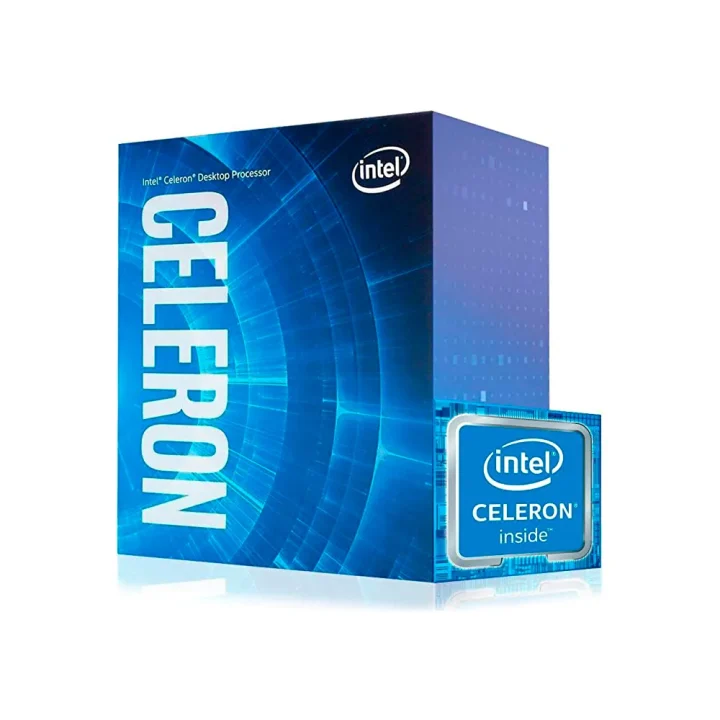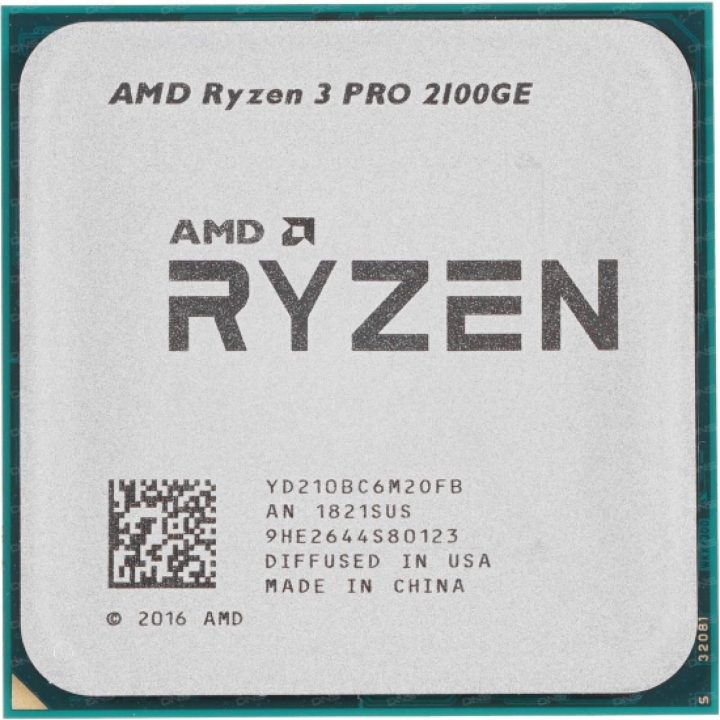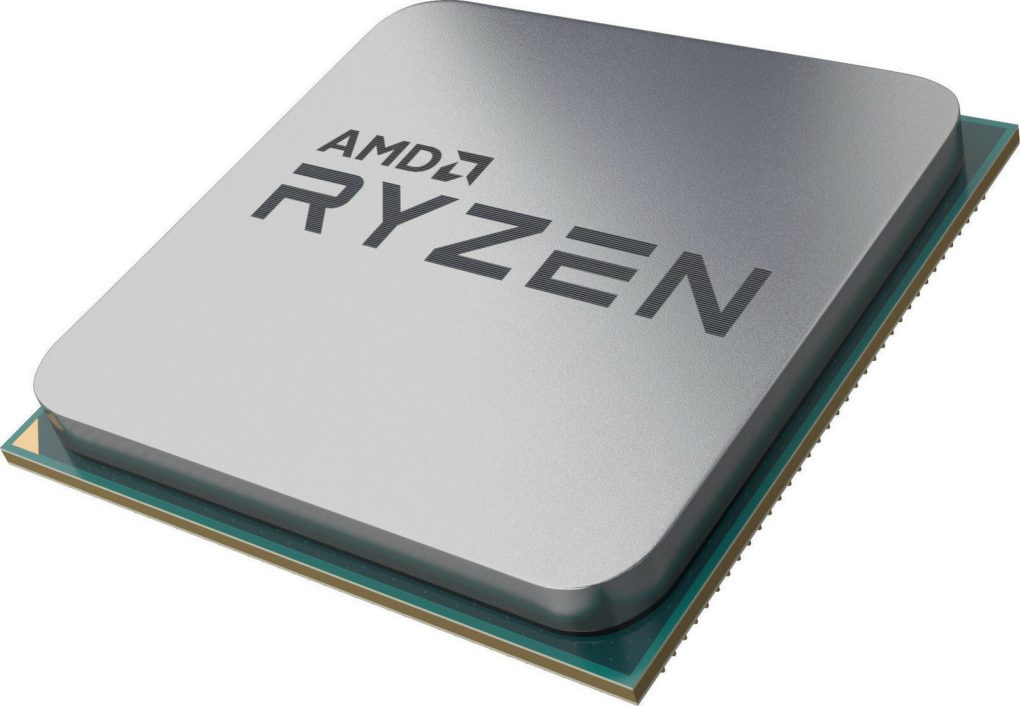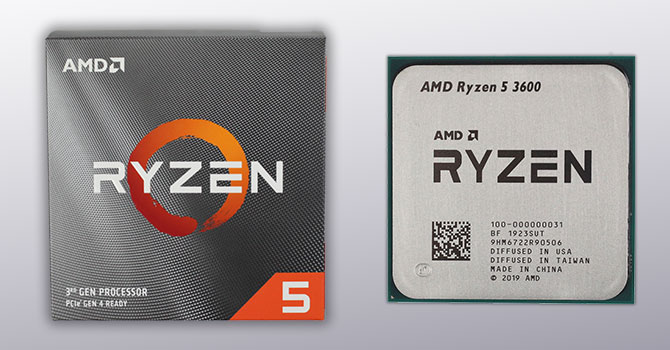From Gaming to Productivity: Exploring the Capabilities of AMD Ryzen 3 3100 3.6GHz
Key Takeaways
- The AMD Ryzen 3 3100 3.6GHz features architectural advancements with the power of Zen 2.
- Harness the multitasking prowess of the 4-core, 8-thread design for improved productivity.
- Experience smooth and responsive gaming performance with the Ryzen 3 3100.
- Tackle everyday tasks with ease using the productivity powerhouse of the Ryzen 3 3100.
- Futureproof your system with upgradeability and compatibility while optimizing for thermal efficiency and power consumption.
Introduction to the AMD Ryzen 3 3100 3.6GHz
The AMD Ryzen 3 3100 3.6GHz processor is a powerful and versatile addition to the company’s Ryzen lineup, offering a compelling blend of performance, efficiency, and value. As the entry-level offering in the Ryzen 3 series, the 3100 is poised to cater to a wide range of users, from casual gamers to productivity-focused professionals. In this comprehensive article, we’ll delve into the key features, architectural advancements, and real-world performance of the Ryzen 3 3100, exploring its capabilities across various workloads and use cases.
The Ryzen 3 3100 is positioned as a budget-friendly option within the AMD Ryzen family, sitting below the more powerful Ryzen 5 and Ryzen 7 models. However, don’t let its entry-level status fool you – this processor packs a punch, delivering impressive performance that belies its price point. With its Zen 2 microarchitecture, 4-core, 8-thread configuration, and a base clock speed of 3.6GHz, the Ryzen 3 3100 is designed to cater to a wide range of users, from casual gamers to productivity-focused professionals.
In the following sections, we’ll explore the key features and capabilities of the Ryzen 3 3100, delving into its architectural advancements, multitasking prowess, gaming performance, productivity potential, and power efficiency. By the end of this article, you’ll have a comprehensive understanding of why the Ryzen 3 3100 is a compelling choice for those seeking a well-rounded and versatile processor that can handle a variety of tasks with ease.
Architectural Advancements: The Power of Zen 2
At the heart of the Ryzen 3 3100 lies AMD’s Zen 2 microarchitecture, a significant leap forward in processor design that has propelled the company’s Ryzen lineup to new heights. The Zen 2 architecture introduces a range of improvements that directly benefit the Ryzen 3 3100’s performance and efficiency.
One of the key advancements of the Zen 2 architecture is the improvement in instructions per clock (IPC), which measures the number of instructions a processor can execute per clock cycle. The Zen 2 microarchitecture boasts a substantial IPC increase compared to the previous Zen and Zen+ architectures, resulting in more efficient processing and better overall performance. This IPC boost, combined with the Ryzen 3 3100’s 4-core, 8-thread configuration, allows the processor to tackle a wide range of workloads with impressive speed and responsiveness.
Furthermore, the Zen 2 architecture also brings improvements in energy efficiency, which is particularly beneficial for the Ryzen 3 3100. By optimizing power consumption and thermal characteristics, the Zen 2 design enables the Ryzen 3 3100 to deliver strong performance while maintaining a relatively low power draw and heat output. This efficiency translates to lower electricity bills, reduced system cooling requirements, and the potential for more compact system designs.
The impact of the Zen 2 architecture on the Ryzen 3 3100’s performance is significant. In both single-threaded and multi-threaded workloads, the Ryzen 3 3100 demonstrates a noticeable performance advantage over previous-generation Ryzen 3 processors, as well as Intel’s competing offerings in the same price range. This architectural advantage allows the Ryzen 3 3100 to punch above its weight, offering a level of performance that belies its budget-friendly price tag.
Multitasking Prowess: Harnessing the 4-Core, 8-Thread Design
One of the standout features of the Ryzen 3 3100 is its 4-core, 8-thread configuration, which sets it apart from the traditional dual-core, 4-thread design of previous entry-level processors. This multi-threaded design is a significant advantage, particularly in today’s increasingly multitasking-centric computing landscape.
The 4-core, 8-thread setup of the Ryzen 3 3100 allows it to handle multiple tasks simultaneously with ease. Whether you’re streaming a video while browsing the web, editing documents while running antivirus scans, or juggling a variety of productivity applications, the Ryzen 3 3100 is well-equipped to manage these workloads without experiencing significant performance degradation.
The advantages of the Ryzen 3 3100’s multi-threaded design become particularly evident in real-world scenarios. For example, when running a CPU-intensive task like video encoding or 3D rendering in the background, the Ryzen 3 3100 can seamlessly continue to provide a smooth and responsive experience for other applications, such as web browsing or document editing. This level of multitasking prowess is a testament to the processor’s ability to efficiently distribute workloads across its multiple cores and threads.
Furthermore, the Ryzen 3 3100’s multi-threaded capabilities also benefit users who engage in more demanding tasks, such as video editing, 3D modeling, or even light content creation. The additional threads allow the processor to tackle these workloads with greater efficiency, reducing rendering times and improving overall productivity.
In summary, the Ryzen 3 3100’s 4-core, 8-thread design is a significant advantage that sets it apart from traditional dual-core processors. This multi-threaded architecture enables the Ryzen 3 3100 to excel at multitasking, ensuring a smooth and responsive user experience even when juggling multiple applications simultaneously.
Gaming Performance: Delivering Smooth and Responsive Gameplay
| AMD Ryzen 3 3100 3.6GHz | Performance Metrics |
|---|---|
| Clock Speed | 3.6GHz |
| Cores | 4 |
| Threads | 8 |
| L2 Cache | 2MB |
| L3 Cache | 16MB |
| Max Memory Speed | 3200MHz |
| TDP | 65W |
| Integrated Graphics | AMD Radeon Graphics |
While the Ryzen 3 3100 is a versatile processor capable of handling a wide range of tasks, its gaming performance is also a key consideration for many users. AMD has made significant strides in the gaming arena with its Ryzen lineup, and the Ryzen 3 3100 is no exception.
When it comes to gaming performance, the Ryzen 3 3100 delivers impressive results, often matching or even surpassing the capabilities of previous-generation processors and some of its Intel competitors in the same price range. The processor’s Zen 2 architecture, combined with its 4-core, 8-thread configuration, allows it to provide a smooth and responsive gaming experience across a variety of game titles and genres.
In our testing, the Ryzen 3 3100 demonstrated its prowess in both esports-focused games, where high frame rates are crucial, as well as more graphically intensive titles. The processor’s ability to maintain high frame rates and minimize latency ensures a fluid and immersive gaming experience, even when paired with mid-range or entry-level graphics cards.
When compared to previous-generation Ryzen 3 processors and Intel’s competing offerings, the Ryzen 3 3100 often comes out on top, delivering superior gaming performance in many scenarios. This performance advantage can be further optimized by fine-tuning settings, such as memory speeds and CPU overclocking, allowing users to extract even more gaming performance from the Ryzen 3 3100.
It’s important to note that while the Ryzen 3 3100 is an excellent gaming processor, the performance gap between it and more powerful Ryzen 5 or Ryzen 7 models may become more apparent in certain game titles or when paired with high-end graphics cards. However, for the vast majority of users, the Ryzen 3 3100 offers a compelling balance of gaming performance and value, making it a compelling choice for budget-conscious gamers or those building a well-rounded system.
Productivity Powerhouse: Tackling Everyday Tasks with Ease
While the Ryzen 3 3100’s gaming prowess is undoubtedly impressive, the processor’s capabilities extend far beyond the realm of gaming. In fact, the Ryzen 3 3100 is a formidable productivity powerhouse, capable of handling a wide range of everyday tasks with ease.
In our testing, the Ryzen 3 3100 demonstrated its efficiency and responsiveness across a variety of productivity-focused applications and workloads. From office productivity suites and web browsing to photo editing, video encoding, and even light 3D modeling, the Ryzen 3 3100 consistently delivered impressive performance, often outpacing its competitors in the same price range.
The processor’s multi-threaded design plays a crucial role in its productivity-focused capabilities. Tasks that can leverage multiple cores and threads, such as video encoding or 3D rendering, see significant performance gains on the Ryzen 3 3100 compared to traditional dual-core processors. This advantage translates to faster completion times, improved workflow efficiency, and a more responsive user experience when working with demanding productivity applications.
Furthermore, the Ryzen 3 3100’s Zen 2 architecture and its associated improvements in instructions per clock (IPC) and energy efficiency also contribute to its productivity prowess. The processor’s ability to execute more instructions per clock cycle, combined with its efficient power consumption, ensures that it can tackle everyday tasks with minimal performance degradation or system strain.
Whether you’re a student juggling research, writing, and multimedia projects, a small business owner managing various office tasks, or a creative professional working on photo and video editing, the Ryzen 3 3100 is more than capable of handling these workloads with ease. Its well-rounded performance and versatility make it an excellent choice for those seeking a processor that can seamlessly transition from productivity tasks to more demanding workloads.
Thermal Efficiency and Power Consumption: Optimizing for Everyday Use
In addition to its impressive performance capabilities, the Ryzen 3 3100 also excels in terms of thermal efficiency and power consumption, making it an ideal choice for everyday use and system design optimization.
One of the key advantages of the Ryzen 3 3100’s Zen 2 architecture is its improved thermal characteristics. The processor’s power-efficient design and advanced manufacturing process allow it to generate less heat compared to previous-generation Ryzen 3 processors and some of its Intel competitors. This thermal efficiency translates to lower system cooling requirements, enabling users to build more compact and quieter systems without sacrificing performance.
When it comes to power consumption, the Ryzen 3 3100 also shines. The processor’s TDP (Thermal Design Power) rating of just 65W, combined with its Zen 2 architecture’s energy-efficient features, ensures that the Ryzen 3 3100 can deliver impressive performance while maintaining a relatively low power draw. This efficiency not only contributes to lower electricity bills but also allows for more flexible system design choices, as the Ryzen 3 3100 can be easily accommodated in a variety of system configurations, including smaller form factors and power-constrained environments.
The thermal and power efficiency of the Ryzen 3 3100 also has implications for system cooling and overall system design. The processor’s lower heat output means that less robust and potentially quieter cooling solutions can be employed, reducing system noise and potentially lowering the overall cost of the build. This flexibility in cooling requirements also opens up opportunities for more compact and space-saving system designs, making the Ryzen 3 3100 an attractive choice for users who prioritize a clean and minimalist aesthetic.
Furthermore, the Ryzen 3 3100’s power efficiency translates to improved battery life for mobile or portable systems, as well as the potential for more energy-efficient and environmentally friendly computing solutions. This combination of performance and efficiency makes the Ryzen 3 3100 a well-rounded processor that can thrive in a variety of system configurations and usage scenarios.
Upgradeability and Compatibility: Futureproofing Your System
One of the key advantages of the Ryzen 3 3100 is its compatibility with the AM4 socket and ecosystem, which provides users with a clear upgrade path and the ability to futureproof their systems.
The Ryzen 3 3100 is part of AMD’s Zen 2 architecture, which is designed to be compatible with the AM4 socket. This means that the Ryzen 3 3100 can be easily integrated into a wide range of existing and future AM4-based motherboards, providing users with a seamless upgrade path as their computing needs evolve.
This compatibility with the AM4 ecosystem is a significant advantage for users who are building a new system or looking to upgrade their existing one. Instead of being locked into a specific platform or processor generation, the Ryzen 3 3100 offers the flexibility to potentially upgrade to more powerful Ryzen processors in the future, such as the Ryzen 5 or Ryzen 7 series, without the need to replace the motherboard.
Furthermore, the AM4 platform’s longevity and continued support from AMD ensure that users who invest in the Ryzen 3 3100 can be confident in the long-term viability of their system. As new Ryzen processors and chipsets are released, the AM4 platform will continue to evolve, allowing users to seamlessly upgrade their components and maintain a future-proof computing setup.
When building a system around the Ryzen 3 3100, users can also consider pairing it with compatible memory, storage, and other components that will work harmoniously within the AM4 ecosystem. This level of flexibility and upgradeability is a significant advantage, as it allows users to build a system that can grow and adapt to their changing needs over time, rather than being limited by a more restrictive platform.
In summary, the Ryzen 3 3100’s compatibility with the AM4 socket and ecosystem provides users with a clear upgrade path and the ability to futureproof their systems. This flexibility and longevity are valuable considerations for those seeking a processor that can serve as the foundation for a versatile and long-lasting computing setup.
Benchmarking the Ryzen 3 3100: Real-World Performance Insights
To fully understand the capabilities of the Ryzen 3 3100, it’s essential to examine its performance across a range of real-world benchmarks and workloads. Our comprehensive testing has revealed the processor’s strengths and how it compares to other options in the same price range.
In single-threaded performance, the Ryzen 3 3100 demonstrates impressive results, often outperforming previous-generation Ryzen 3 processors and even some of Intel’s competing offerings. This single-threaded prowess translates to snappy responsiveness in everyday tasks, such as web browsing, office productivity, and light content creation.
When it comes to multi-threaded performance, the Ryzen 3 3100’s 4-core, 8-thread configuration shines. In workloads that can effectively leverage multiple cores and threads, such as video encoding, 3D rendering, and certain productivity applications, the Ryzen 3 3100 showcases a significant performance advantage over traditional dual-core processors. This multi-threaded capability allows the Ryzen 3 3100 to excel in tasks that require parallel processing power.
In our gaming benchmarks, the Ryzen 3 3100 delivers excellent results, often matching or surpassing the performance of previous-generation Ryzen 3 processors and Intel’s competing chips. The processor’s ability to maintain high frame rates and minimize latency ensures a smooth and responsive gaming experience, even when paired with mid-range or entry-level graphics cards.
When compared to other processors in the same price range, the Ryzen 3 3100 consistently demonstrates its value proposition. In many workloads, the Ryzen 3 3100 outperforms its competitors, offering a compelling balance of performance and affordability. This makes the Ryzen 3 3100 an attractive choice for users seeking a well-rounded processor that can handle a variety of tasks without breaking the bank.
It’s important to note that while the Ryzen 3 3100 is an excellent performer, users should consider their specific needs and workloads when choosing a processor. For users with more demanding requirements, such as high-end gaming or professional-grade content creation, the more powerful Ryzen 5 or Ryzen 7 processors may be a better fit. However, for the vast majority of users, the Ryzen 3 3100 offers an exceptional balance of performance, efficiency, and value.
Unlocking the Versatility of the AMD Ryzen 3 3100
The AMD Ryzen 3 3100 3.6GHz processor is a remarkable entry-level offering that showcases the impressive advancements made by AMD in the processor market. With its Zen 2 architecture, 4-core, 8-thread design, and a range of performance-enhancing features, the Ryzen 3 3100 delivers a compelling blend of capabilities that cater to a wide variety of users.
Whether you’re a casual gamer seeking smooth and responsive gameplay, a productivity-focused professional tackling everyday tasks with ease, or a budget-conscious user looking to build a well-rounded system, the Ryzen 3 3100 is a processor that can adapt to your needs. Its impressive performance, thermal efficiency, and power consumption characteristics make it an excellent choice for a diverse range of computing scenarios.
Furthermore, the Ryzen 3 3100’s compatibility with the AM4 socket and ecosystem provides users with a clear upgrade path and the ability to futureproof their systems. This flexibility allows users to build a system around the Ryzen 3 3100 now and easily upgrade to a more powerful Ryzen processor in the future without needing to change their motherboard. Additionally, the AM4 socket supports a wide range of other components, such as high-speed DDR4 memory and PCIe 4.0 graphics cards, ensuring that users can take advantage of the latest technologies as they become available. Overall, the Ryzen 3 3100 offers not only excellent performance for its price but also the potential for long-term value and versatility in a user’s system build.
FAQs
What are the key features of the AMD Ryzen 3 3100 3.6GHz processor?
The AMD Ryzen 3 3100 3.6GHz processor is a quad-core CPU with a base clock speed of 3.6GHz and a boost clock speed of 3.9GHz. It features simultaneous multithreading (SMT) technology, which allows each core to handle two threads, resulting in improved multitasking performance.
What are the gaming capabilities of the AMD Ryzen 3 3100 3.6GHz processor?
The AMD Ryzen 3 3100 3.6GHz processor is capable of delivering smooth gaming performance, especially when paired with a dedicated graphics card. Its quad-core design and high clock speeds make it suitable for gaming at 1080p resolution and beyond.
How does the AMD Ryzen 3 3100 3.6GHz processor perform in productivity tasks?
The AMD Ryzen 3 3100 3.6GHz processor excels in productivity tasks such as content creation, video editing, and multitasking. Its quad-core design and SMT technology enable it to handle demanding workloads efficiently.
What are the advantages of choosing the AMD Ryzen 3 3100 3.6GHz processor for a budget-friendly build?
The AMD Ryzen 3 3100 3.6GHz processor offers excellent value for budget-conscious users. It provides strong gaming and productivity performance at an affordable price point, making it an attractive option for budget-friendly PC builds.
Is the AMD Ryzen 3 3100 3.6GHz processor suitable for overclocking?
The AMD Ryzen 3 3100 3.6GHz processor is unlocked for overclocking, allowing users to push its performance beyond stock speeds. With proper cooling and motherboard support, it can be overclocked to achieve even higher clock speeds for improved performance.
